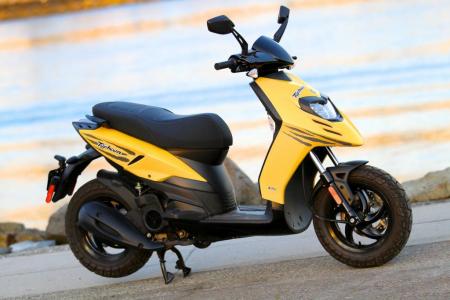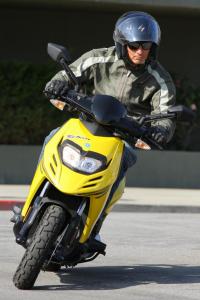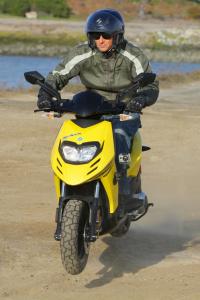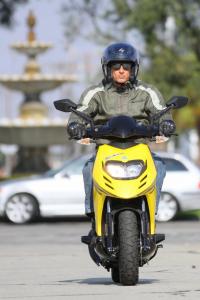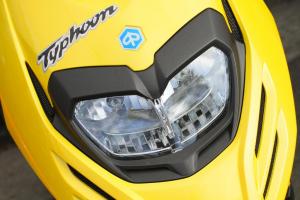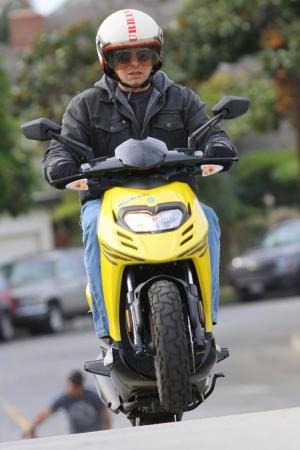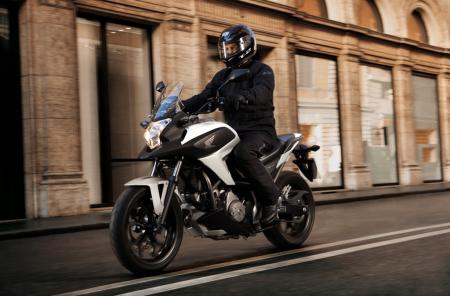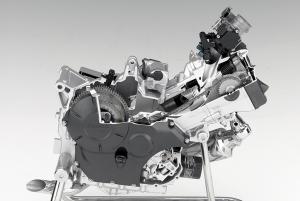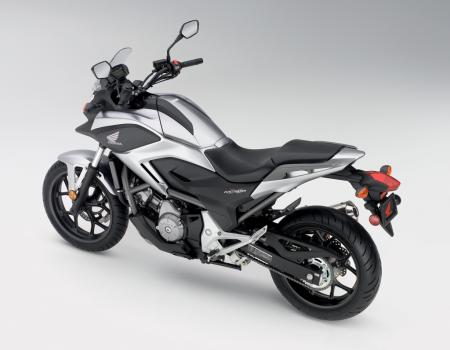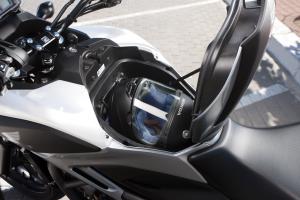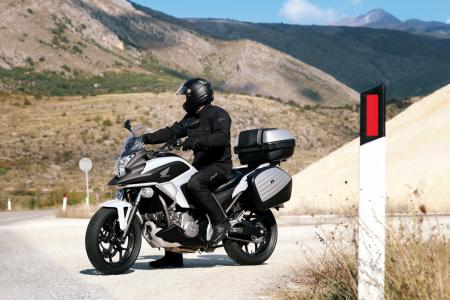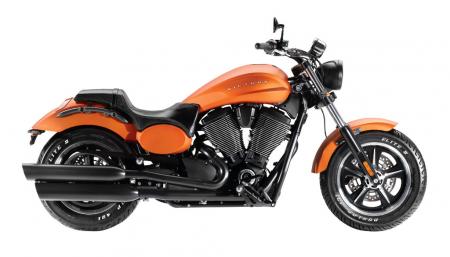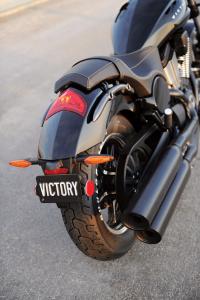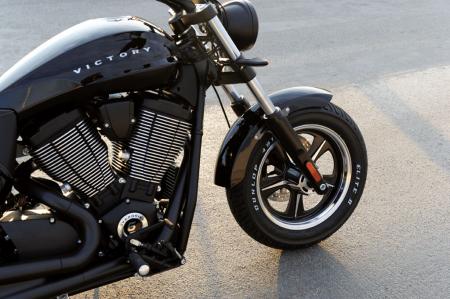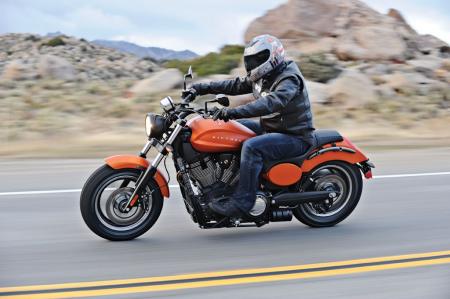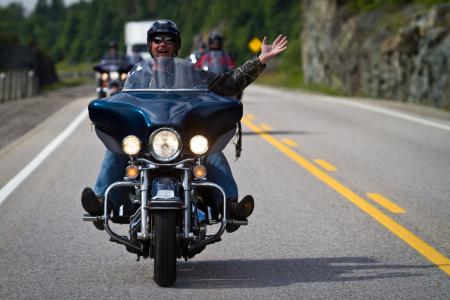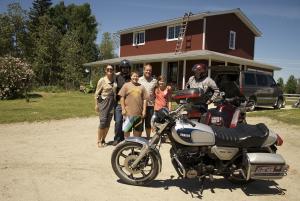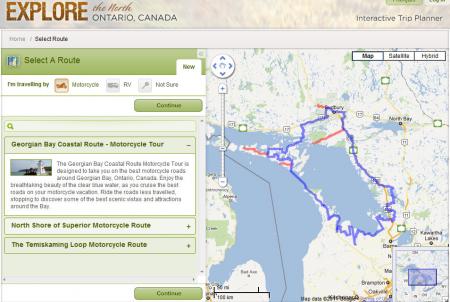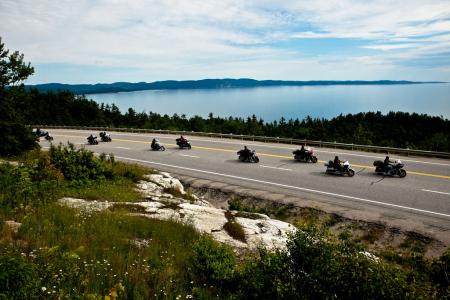Think of cruisers, and the usual suspects come to mind: Harley-Davidson, various offerings from Japan’s Big Four, Victory – in fact, nearly every OEM builds a bike to tap into the lucrative cruiser market.
Triumph, better known for its hooligan-making naked roadster
Speed Triple or its GS-inspired big trailie
Tiger, wasn’t a name that surfaced much in cruiser circles. But that changed in 2004 with the introduction of the
Rocket III, powered by a monstrous 2,294 cc (140.0 cu in) inline-Triple. The big, rear-tire-roasting power cruiser had cruiser fans’ heads spinning. Then in 2009 the British bike maker again caught the attention of cruiser lovers with the introduction of the
Thunderbird and its large-displacement (1597cc) vertical-Twin, a bike that impressed us so much that we named it our Cruiser of the Year in 2009.
However, before these bruisers burst onto the scene, Triumph already had a model entered in the cruiser genre.
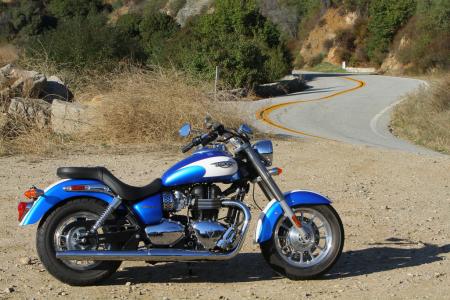 The likeable Triumph America has sat quietly in the lineup since 2002. |
The humble
Triumph America is but a blip on the radar when cruiser riders gather to talk shop. Even within Triumph’s world the America sits quietly in the background while the sales-dominatingStreet Triple 675 (and R model) and other sports bikes steal the limelight. Admittedly, even we haven’t given the America much attention in the past 10 years. But a recent ride on a current model year America revealed that shoppers in the cruiser market shouldn’t overlook this cruiser-ish Brit bike.
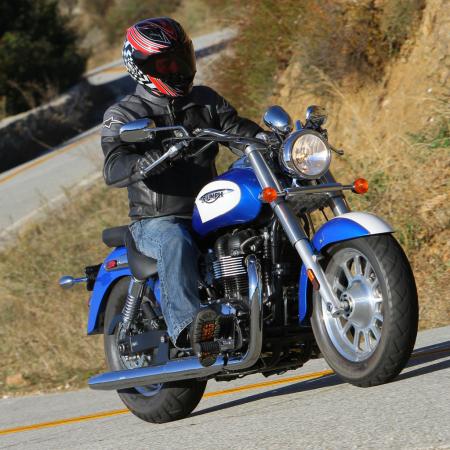 Despite being a humble middleweight, the America has many features that make it feel and look like a bigger cruiser. Part of that bigger bike appeal is a very roomy, comfortable ergonomic layout. |
Triumph America: Not Your Daddy’s Cruiser
In a world of
tha-thump-tha-thump-tha-thump V-Twins, the America’s smooth-running, fuel-injected, 865cc vertical-Twin is a unique break with cruiser engine tradition. If you’re looking for a rumbling, raucous ride – one that causes the entire bike to shudder – take note that the America’s 270-degree firing interval has endowed the engine with a quiet-as-a-mouse character when compared to most Harleys and many Japanese cruisers. But if you’re more concerned with enjoying the scenery than about how many passersby are noticing your thundering exhaust, then the gentle Triumph Twin deserves your attention.
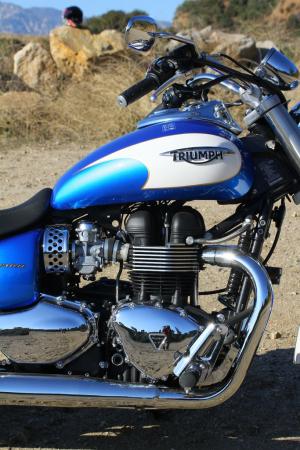
The America’s 865cc vertical-Twin is the same basic mill found in the Triumph Bonneville, but with a 270-degree firing order rather than 360-degree order used in the Bonnie. The idea behind the 270-degree was to give the engine a little more cruiser-typical character, and yet the engine is remarkably smooth.
Despite the humility of the America’s engine it is by no means ill-suited to motivating the bike’s 550-pound ready-to-ride weight. The America’s as-tested 50 hp at 6500 rpm and respectable 47 ft-lbs at 3400 rpm accelerate the English-made cruiser briskly, with smooth, predictable fueling across the rev range. And while I suspect the engine could easily handle an additional cog in its gearbox, the 5-speed trans nevertheless shifts slickly and is complemented by a light-action clutch.
The first-gen America rolled on cruiser-classic wire wheels, but the most current issue wears 12-spoke cast-aluminum wheels that project a more muscular appearance. Attached to the front wheel is a single 310mm brake disc clamped by a Nissin two-piston caliper, while a 285mm disc and Nissin two-piston caliper slow things from the back. The front caliper handily slows the bike from speed with crisp, authoritative braking action. Applying both calipers simultaneously to retard the America’s forward progress left me wishing that more cruisers in the market offered the same degree of feel and power as what the America provides.
With a chubby-looking front tire (130/90 x 16) the America doesn’t strike the impression of a light-steering cruiser. And the 33.0-degree rake, 5.62 inches of trail and rangy 63.6-inch wheelbase don’t exactly scream “Snappy steering!” Despite these lazy figures the America is anything but sluggish between turns – though the long wheelbase does make tight-radius U-turns challenging at times.
A notably wide, pull-back handlebar allows plenty of steering leverage, and once set into a corner the America is wonderfully stable and tracks accurately throughout the arc of a turn. While the America is a cruiser, it doesn’t suffer from ultra-restrictive lean angle clearance; it will drag a peg, but not as soon as you might expect.
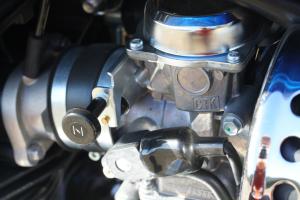
Carbs on a modern production-level cruiser? Nope. These Keihin carburetor look-a-likes are actually throttle bodies and an EFI system.
The America’s 41mm Kayaba fork has nearly 5 inches of road-imperfection-gobbling suspension travel. A set of dual coil-over-spring, preload adjustable shocks have 3.77 inches of travel (considerably more than almost any Harley) but provide a slightly firm ride over larger freeway expansion joints and bumps. Generally, though, ride quality is better than average, whether on surface streets or peeling off the miles on the interstate.
In his 2002 review of the America, John Burns said that he thought the America wasn’t “trying desperately hard to look like a Harley-Davidson.” Ten years later that insightful statement is still valid, but for reasons I can’t quite nail down, the America’s styling (with the exception of its engine) strikes me as similar to a Japanese cruiser.
Perhaps the America’s easily seen and inexpensive-looking stamped-steel mount holding the speedo, or the poorly routed clutch cable that brushes against the inside of the left header pipe, are what remind of similar budget-saving tactics I’ve seen time and again on other brands. On the other hand, the judicious use of rich chrome in all the right places offsets some of the less attractive bits.
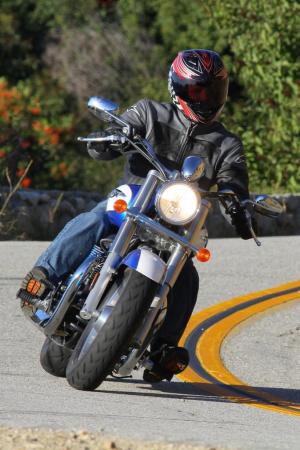
The America has generous lean angle for a cruiser, and its chassis performance allows for spirited rides on canyon roads.
The America’s ample engine power, more than adequate stopping force and friendly handling make a compelling package. But it’s perhaps the roomy and relaxed ergonomics and large-bike feel and look that stand out as this cruiser’s two most prominent qualities.
You’ll sit mostly upright in the large, wide saddle (the passenger seat is also roomy), and the sweeping-arced handlebar makes for a natural, easy reach. The footpegs are mounted forward just enough to complete the relaxed rider triangle, yet you never feel like you’re slouching in the seat that’s a scant 27.1 inches off the ground.
The analog speedo’s prominent placement is handy, mirrors provide a clear, useful field of view, and the clutch and brake lever have a 4-position reach adjustment. The layout of the rider environment is such that freeway jaunts of 50-plus miles click off with minimal effort. A small windscreen from the aftermarket would optimize comfort during time on the SuperSlab.
Finally, the large headlight, wide seat, wide handlebar and voluminous 5.1-gallon fuel tank all work to create the sensation you’re aboard a much larger motorcycle without making the America feel overly big or cumbersome.
With a base MSRP of $8299 ($8599 for two-tone colors) the Triumph America is comparably priced to Kawasaki’s Vulcan 900 Classic ($8299 – $8499) or Harley’s Sportster SuperLow ($7999 – $8499) and the V Star 950 ($8490) from Star.
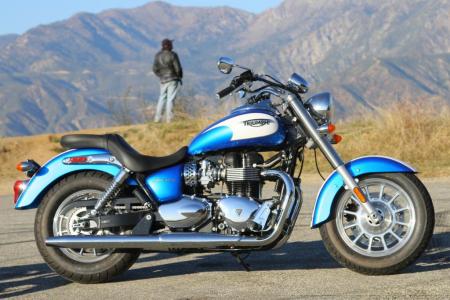 The America hits most of the right cruiser notes but also offers something a little different from the usual crowd of Harleys and Harley clones. |
But each of those middleweight cruisers fit roughly within the same mold. The America hits most of the right cruiser notes, but its distinct vertical-Twin power source is refreshingly atypical in this class.
If you’re looking for something a little different without straying too far from the well-worn cruiser path, make sure to give the America a first, and then second look.
Related Reading
2009 Triumph Bonneville Review
2007 Triumph Bonneville America Review
2002 Triumph Bonneville America Review
All Things Triumph on Motorcycle.com
All Things Cruiser on Motorcycle.com





 4:42 AM
4:42 AM
 Chiken Joe
Chiken Joe






